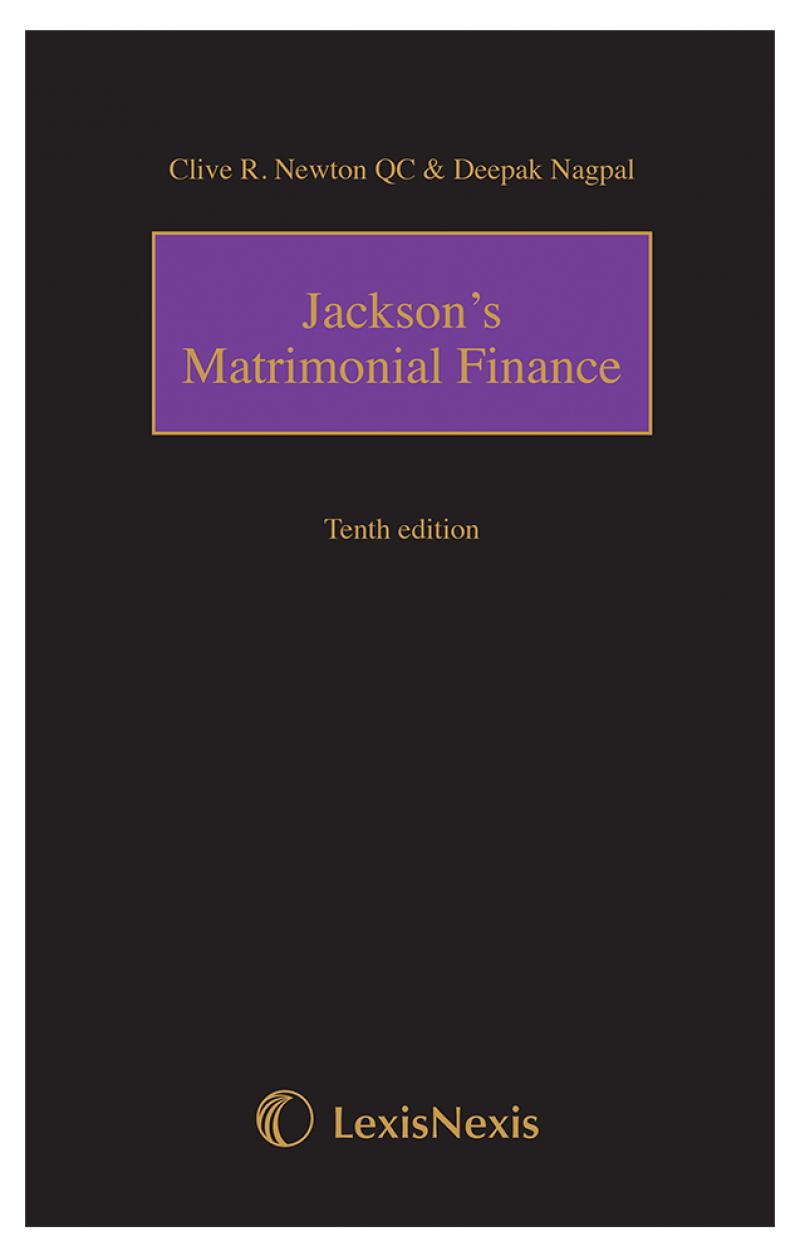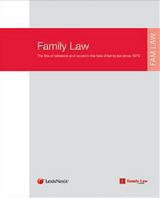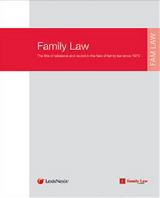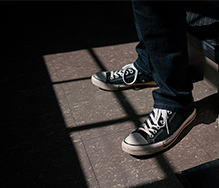family law, vulnerable witnesses, sir james munby, evidence, reform, practice direction 12j
Recent history: YJCEA 1999 and ‘special measures’
So, how did family law get to this point? Criminal law recognised the problems in the run-up to YJCEA 1999 Part 2 as explained by Lady Hale in
R (D (a minor)) v Camberwell Green Youth Court (above):
'[19] … The new scheme built upon and expanded earlier tentative steps taken both by the common law and statute to enable children to give evidence in criminal trials: removing the accused from the sight though not the hearing of a witness (R v Smellie (1919) 14 Cr App R 128); setting up screens to prevent the witness seeing or being seen from the dock (R v X, Y and Z (1990) 91 Cr App R 36); allowing a child to give[ evidence by live television link (Criminal Justice Act 1988, s 32); and admitting a video recorded interview as the child's evidence in chief (Criminal Justice Act 1988, s 32A, inserted by the Criminal Justice Act 1991, s 54).'
A main object of Part 2 is with the ‘quality of a witness’s evidence’ (a term adopted, without attribution, by the VWCWG) under YJCEA 1999, s 16(5):
'(5) In this Chapter references to the quality of a witness’s evidence are to its quality in terms of completeness, coherence and accuracy; and for this purpose “coherence” refers to a witness’s ability in giving evidence to give answers which address the questions put to the witness and can be understood both individually and collectively.'
YJCEA 1999, ss 16 and 17 create three categories of witness who may be eligible for assistance under Part 2. YJCEA 1999, s 16(1)(a) defines a witness in criminal proceedings as eligible for assistance if under 17 at the time of the hearing fixed to consider a special measures direction. Section 16(1)(b) deals with witnesses who are otherwise eligible for assistance (ie what amounts to a ‘vulnerable witness’). Section 16 provides as follows:
16 Witnesses eligible for assistance on grounds of age or incapacity
(1) For the purposes of this Chapter a witness in criminal proceedings (other than the accused) is eligible for assistance by virtue of this section—
(a) if under the age of 17 at the time of the hearing; or
(b) if the court considers that the quality of evidence given by the witness is likely to be diminished by reason of any circumstances falling within subsection (2).
(2) The circumstances falling within this subsection are—
(a) that the witness—
(i) suffers from mental disorder within the meaning of the Mental Health Act 1983;
(ii) otherwise has a significant impairment of intelligence and social functioning;
(b) that the witness has a physical disability or is suffering from a physical disorder.
YJCEA 1999, s 16(1)(b) deals with all other witnesses (ie other than children under 17), who may be eligible for assistance (ie vulnerable witnesses) and who come within the terms of s 16(2): namely that are mentally incapacitated with the terms of Mental Capacity Act 2005, or that otherwise the ‘witness has a physical disability or is suffering from a physical disorder’. Section 17(1) defines as eligible for assistance a witness where ‘the court is satisfied that the quality of evidence given by the witness is likely to be diminished by reason of fear or distress on the part of the witness in connection with testifying in the proceedings’. And, as touched upon below, where a witness is a child or otherwise eligible for assistance, they will be entitled to special measures assistance. In
Re W (Children) (Abuse: Oral Evidence) [2010] UKSC 12, [2010] 1 FLR 1485 Lady Hale spoke of use of these ‘special measures by analogy’ in family proceedings.
The needs of witnesses in family proceedings – not thus far met in family law procedures – was given especial impetus when Roderic Wood J persuaded the Attorney-General to fund an advocate to cross-examine (for a father acing in person and the court) in
H v L and R [2006] EWHC 3099 (Fam), [2007] 2 FLR 162 Roderic Wood J (and see Evidence paras 8.39 to 8.56). The judge drew particular attention to YJCEA 1999 Part 2, and to the fact that it did not apply in family proceedings. The funding arrangement for an advocate is unlikely to be repeated by Attorney-General in the light of comments from the Court of Appeal in
Re K & H (Children) [2015] EWCA Civ 543, [2016] 1 FLR 754: Lord Dyson MR felt that Roderic Wood J had been unduly squeamish in standing back from cross-examining the father. However, he does not offer any clear options for judges, beyond statutory intervention in accordance with YJCEA 1999, s 38 (cross-examination of a witness by ‘accused’ in person).
Vulnerable Witnesses and Children Working Group
Following his ‘View from the President’s Chambers’ of 4th June 2014, Sir James Munby set up the Vulnerable Witnesses and Children Working Group which reported within 6 weeks (31 July 2014: https://www.judiciary.gov.uk/publications/president-of-the-family-divisions-consultation-interim-report-of-the-children-and-vulnerable-witnesses-working-group-31st-july-2014/). At para 13(ii) of this report, the Group recommended a single ‘new mandatory rule in respect of Children and Vulnerable Witnesses and Parties supplemented by practice directions (PD) and guidance approved by the President’; but no draft was provided.
Unfortunately the group failed to identify – and this failure persists – that, in reality, the Group was dealing with three quite separate – if sometimes overlapping – issues, namely:
- the evidence of children (as distinct from their views) in their own proceedings (as in Re W (Children) (Abuse: Oral Evidence) [2010] (above));
- cases where the judge may be asked to hear the views of a child; and
- the evidence of vulnerable adult witnesses (as in Re A [2012] (above) and H v L and R (both above)).
By Spring 2015
a further draft report of the VWCWG was produced; and then 6 months later draft rules (now 11 rules as a new Family Procedure Rules 2010 Part 3A: https://consult.justice.gov.uk/digital-communications/draft-amendments-to-family-procedure-rules/supporting_documents/annexachildrenvulnerablewitnessesfprcdraftrule.pdf) emerged (for commentary see
http://www.familylaw.co.uk/news_and_comment/draft-rules-for-vulnerable-persons-in-family-proceedings). A practice direction promised by the draft rules is still awaited. By this stage there had still been no clear review by the Group of the resources implications of the rules being applied in children or other proceedings (eg the ‘measures’ referred to in the draft rules: see below).
The President’s statement of 30 December 2016 seems at last to be a recognition by the Ministry of Justice that the summer 2015 recommendations have resources implications. This is the extent of any proposed reforms at the beginning of 2017.
And in the meantime
If a witness comes within one of the categories in YJCEA 1999, ss 16 or 17 (as explained above) he or she is eligible to be considered for assistance in the form one or more of the special measures directions set out in YJCEA 1999, ss 18 and 23-30, that is:
- preventing a witness from seeing a party, by ‘screen or other arrangement’ (YJCEA 1999 23);
- allowing a witness to give evidence by live link (s 24: ie video-link or other means for a witness, absent from the hearing room, to give evidence: s 24(8));
- hearing a witness’ evidence to the exclusion of others (s 25: ie in private, which is normally the case in children proceedings; but which will also be called for if parties are to be excluded);
- admitting video recorded evidence or cross-examination (ss 27 and 28);
- questioning a witness through an intermediary (s 29);
- using a device to help a witness communicate (s 30);
- a direction may be given to dispense with the wearing of wigs and gowns when evidence is given (s 26).
The VWCWG draft amendments, under the heading ‘Measures’, at draft rule 3A.7 provide as follows:
(1) The measures referred to [above] are those which —
(a) prevent a party or witness from seeing the other party;
(b) allow a party or witness to participate in hearings and give evidence by live link;
(c) provide for a party or witness to use a device to help communicate;
(d) provide for a party to participate in proceedings with the assistance of an intermediary;
(e) provide for a party or witness to be questioned in court with the assistance of an intermediary ; or
(f) do anything else which is set out in Practice Direction xxx.
In
Re W (Children) (Abuse: Oral Evidence) [2010] (above) Lady Hale spoke nearly seven years ago of use of these ‘special measures by analogy’, and made reference to the way family courts might make use of them in family proceedings:
'[28] The family court will have to be realistic in evaluating how effective it can be in maximising the advantage while minimising the harm. There are things that the court can do but they are not things that it is used to doing at present. It is not limited by the usual courtroom procedures or to applying the special measures by analogy. The important thing is that the questions which challenge the child's account are fairly put to the child so that she can answer them, not that counsel should be able to question her directly. One possibility is an early video'd cross examination as proposed by Pigot [Report of the Advisory Group on Video Evidence (the Pigot Report, 1989)]. Another is cross-examination via video link. But another is putting the required questions to her through an intermediary. This could be the court itself, as would be common in continental Europe and used to be much more common than it is now in the courts of this country.'
Alongside this MFPA 1984, s 31G(6) has provided that:
(6) Where in any proceedings in the family court it appears to the court that any party to the proceedings who is not legally represented is unable to examine or cross-examine a witness effectively, the court is to—
(a) ascertain from that party the matters about which the witness may be able to depose or on which the witness ought to be cross-examined, and
(b) put, or cause to be put, to the witness such questions in the interests of that party as may appear to the court to be proper.
This is a re-hash of much older provisions going back at least to Magistrates’ Courts Act 1952; not a Damascene conversion of Ministry of Justice to the needs of vulnerable witnesses in family proceedings. (I am afraid I do not therefore agree with Pink Tape to this extent in
http://www.pinktape.co.uk/public-funding/cross-examination-of-complainants-why-on-earth-is-it-happening/. As can be seen it is specifically designed to help – ‘unable to examine or cross-examine… effectively’: not to prevent from cross-examining – a litigant in person. It is no help here.)
A way forward: European Convention 1950 and legal aid
In his statement Sir James Munby P says he would ‘welcome a bar’ to the ability of ‘alleged perpetrators being able to cross-examine their alleged victims’; but, he goes on ‘the judiciary cannot provide this, because it requires primary legislation and would involve public expenditure. It is therefore a matter for ministers.’
For the purposes of what follows, I am happy to accept that what Lady Hale says in
Re W and
Re A provides guidelines as to the present law in family proceedings. If that is so, the items statutorily provided for in YJCEA 1999, ss 23-28 are covered. It is only the ‘intermediary’ point which creates resources implications. The massive ‘if’ question then depends on an intermediary being directed on case management in family proceedings; and then only if the intermediary or other legal assistance (per YJCEA 1999, s 38) can be provided on legal aid.
Of the child in
Re W [2010] Lady Hale said (see [26] above): ‘The important thing is that the questions which challenge the child's account are fairly put to the child so that she can answer them, not that counsel should be able to question her directly.’ If this is so of the child, does not the same apply for the vulnerable witness?
The question goes further: if ‘fair’ questioning is the criterion, then if this cannot be done because of the effects on a witness’s evidence then can it be a fair trial if that evidence is not given through an intermediary, or counsel is not instructed per YJCEA 1999, s 36 to cross-examine for an alleged abuser in person? Lady Hale in
Re A (Sexual Abuse: Disclosure) [2012], it will be recalled, said:
'[36] … The court's only concern in family proceedings is to get at the truth. The object of the procedure is to enable witnesses to give their evidence in the way which best enables the court to assess its reliability. It is certainly not to compound any abuse which may have been suffered…'
And if it is not a trial fair for the victim then her European Convention 1950 Art 6(1) rights are in issue and – means permitting – she may be entitled to legal aid as an exceptional case determination (Legal Aid Sentencing and Punishment of Offenders Act 2012, s 10(3)). If any of this is correct, resources questions can be addressed at this stage without changes to primary legislation (though that would be good to make matters clearer).
Lady Hale’s comments above seem to demand, as a minimum, the following:
- The list in YJCEA 1999, ss 23-28 as developed and explained by Lady Hale in Re W.
- Regard being paid to the victim’s right’s to a fair trial; and as to what is required to ensure she can give evidence of a quality which is not diminished.
- If this is required to be protected by special measures and an intermediary, then is her trial fair without this (where resources must be spent) and therefore without exceptional case determination under LASPO 2012, s 10(3)?
If each of these requirements are not met in the case of a vulnerable witness – ie one where the quality of evidence may be diminished by cross-examination by an alleged abuser, his presence in court or for other reasons – special measures should be set up and legal aid (under the present scheme: s 10(3)) be provided. The common law and the court’s inherent jurisdiction to govern its own procedures can surely be adapted accordingly?












 31 MAR 2025
31 MAR 2025

 31 MAR 2025
31 MAR 2025

 31 MAR 2025
31 MAR 2025

 31 MAR 2025
31 MAR 2025

 31 MAR 2025
31 MAR 2025











